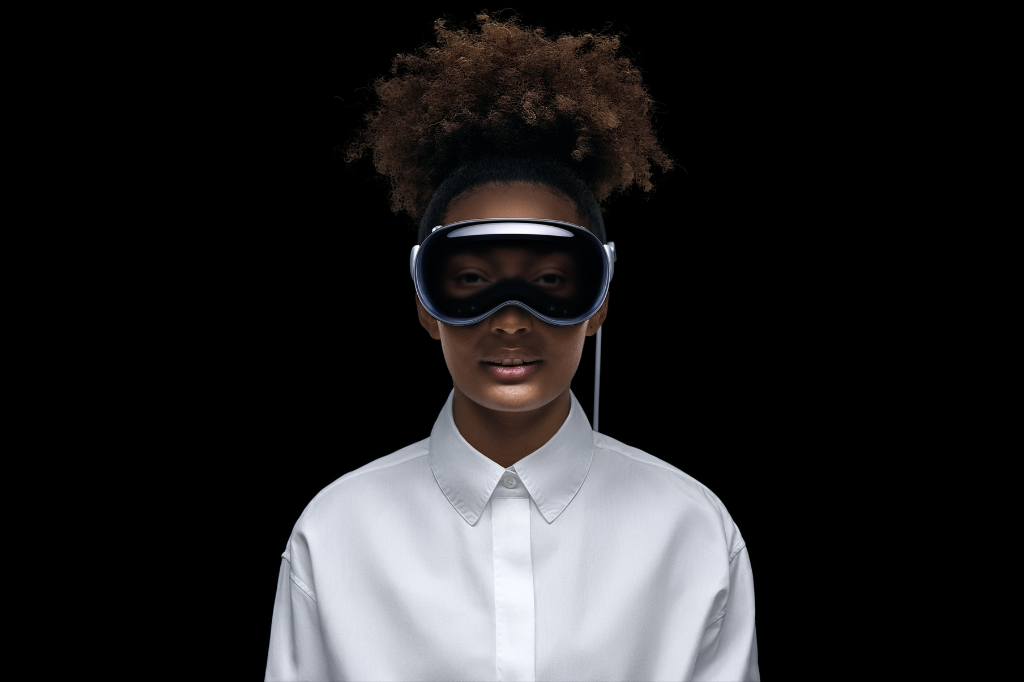Apple unveiled its first mixed reality headset, the Vision Pro, at this year’s Worldwide Developers Conference (WWDC) on June 5, 2023. The company’s “first spatial computer” will enable users to interact with digital content like never before by leveraging a new 3D interface to deliver immersive spatial experiences.
The Vision Pro marks a new era for immersive technologies, and it can potentially be used to bolster efforts in using such technologies to improve communities.
How the Vision Pro Headset Can Strengthen Efforts to Transform Orlando
Cities around the world are starting to apply new technologies to help improve their communities. City, University of London, for instance, has launched an initiative that will bring about the UK’s largest AR, VR, and metaverse training center. London has also been mapped in 3D, allowing locals and visitors to have an immersive view of the city.
In 2021, Columbia University started a project called the “Hybrid Twins for Urban Transportation”, which creates a digital twin of New York’s key intersections to help optimize traffic flows.
Using New Technologies to Enhance Orlando’s Digital Twin Initiative
With Orlando, Florida, being designated as the metaverse’s MetaCenter, new MR headsets like Apple’s Vision Pro can help create radical changes to bolster the city’s digital twin efforts, which can accelerate Orlando’s metaverse capabilities.

In an interview with ARPost, Tim Giuliani, the President and CEO of the Orlando Economic Partnership (OEP), shared that emerging technologies like the digital twin enables them to showcase the region to executives who are planning to relocate their companies to Orlando.
Moreover, the digital twin helps local leaders ensure that the city has a robust infrastructure to support its residents, thus positively impacting the city’s economy and prosperity.
The digital twin’s physical display is currently housed at the OEP’s headquarters in downtown Orlando. However, Giuliani shared that AR headsets can make it more accessible.
“We can use the headset’s technology to take our digital twin to trade shows or whenever it goes out to market to companies,” said Giuliani. According to Giuliani, utility companies and city planners can use the 3D model to access a holographic display when mapping out proposed infrastructure improvements. Stakeholders can also use it to create 3D models using their own data for simulations like climate change and infrastructure planning.
He added that equipment like the Vision Pro can help make VR, AR, and 3D simulation more widespread. According to Giuliani, while the Vision Pro is the first one to come out, other new devices will come out in the coming years and the competition will make these devices a consumer device.
“Apple’s announcement cements the importance of the MetaCenter. The Orlando region has been leading in VR and AR and 3D simulation for over a decade now. So, all the things that we have been saying of why we are the MetaCenter, this hardware better positions us to continue leading in this territory,” he told us.
Leveraging the Vision Pro and MR to Usher in New Innovations
Innovate Orlando CEO and OEP Chief Information Officer David Adelson noted that aside from companies, ordinary individuals who aren’t keenly interested in immersive tech for development or work can also use devices like the Vision Pro to help Orlando with its effort to become the MetaCenter.
“These new devices are one of the hardware solutions that this industry has been seeking. Through these hardware devices, the software platforms, and simulation market that has been building for decades, will now be enabled on a consumer and a business interface,” said Adelson.
Adelson also shared that Orlando has been leading in the spatial computing landscape and that the emergence of a spatial computing headset like the Vision Pro brings this particular sector into the spotlight.
How can businesses leverage the new Vision Pro headset and other MR technologies to usher in new developments?
According to Giuliani, businesses can use these technologies to provide a range of services, such as consulting services, as well as help increase customer engagement, cut costs, and make informed decisions faster.
“AR can be a powerful tool to provide remote expertise and remote assistance with AR helps move projects forward and provide services that would otherwise require multiple site visits. This is what we are taking advantage of with the digital twin,” said Giuliani.
Giuliani also noted that such technologies can be a way for companies to empower both employees and customers by enhancing productivity, improving services, and fostering better communication.
Potential Drawbacks of Emerging Technologies
Given that these are still relatively new pieces of technology, it’s possible that they’ll have some drawbacks. However, according to Adelson, these can be seen as a positive movement that can potentially change the Web3 landscape. Giuliani echoes this sentiment.
“We like to focus on the things that can unite us and help us move forward to advance broad-based prosperity and this means working with the new advancements created and finding ways to make them work and facilitate the work we all do,” he told us.




